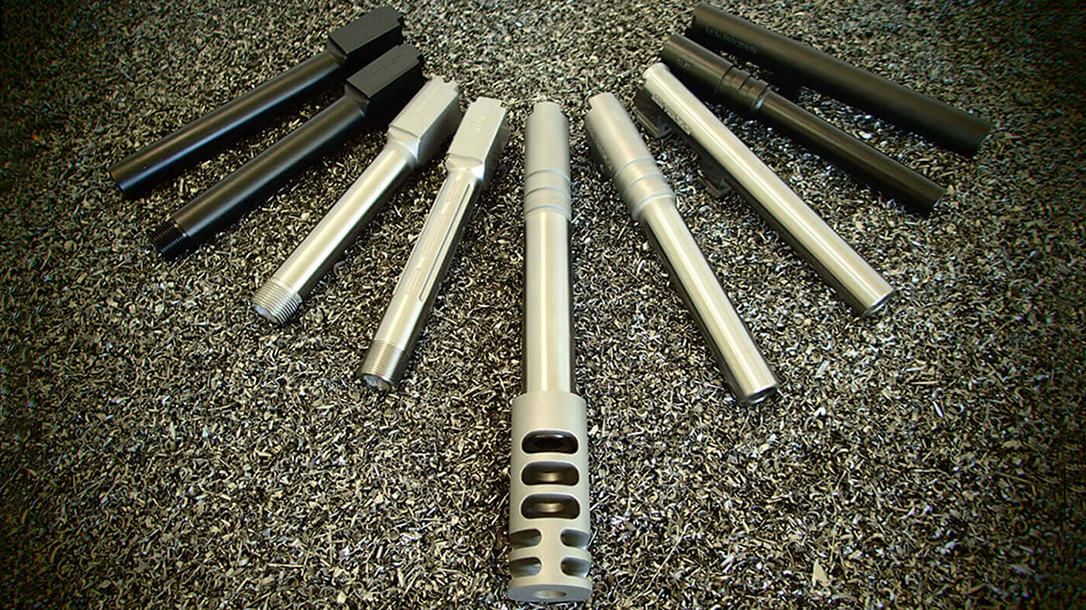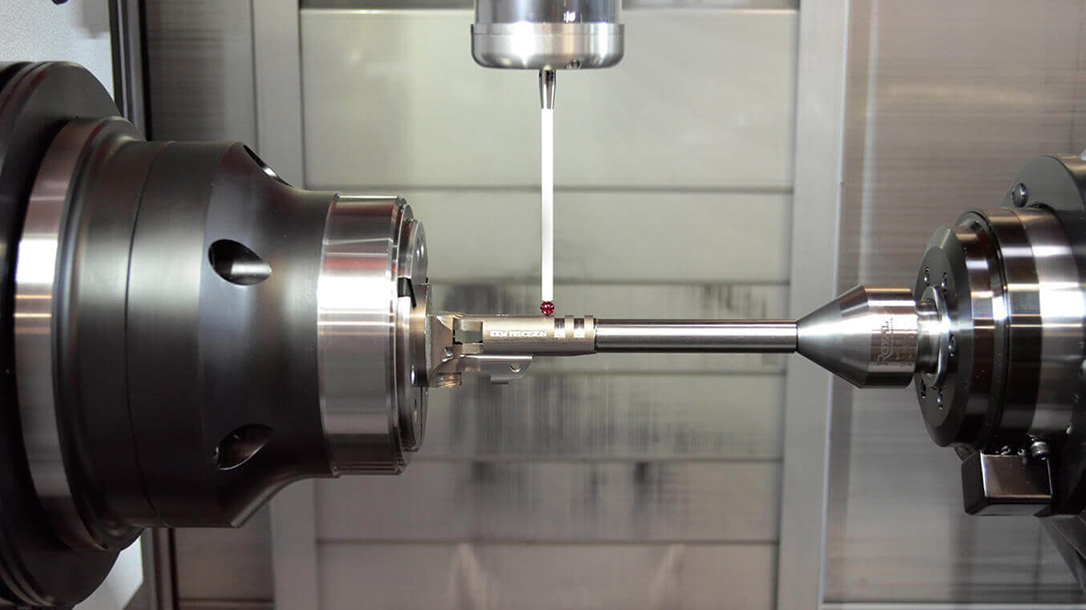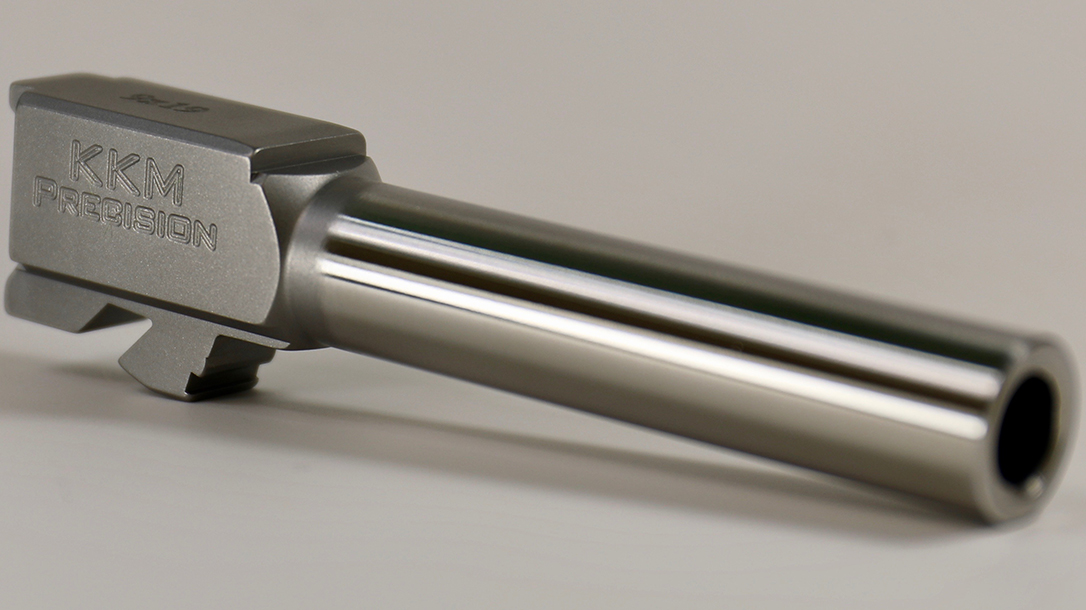One of the realities of the firearms industry is that gun owners love to tinker and modify their guns to achieve the best performance possible. While some are happy with out of the box performance, an equal number of shooters look to the aftermarket world to bring more zoom to their boom.
One very popular item in this DIY gun mod pursuit is barrels. The aftermarket barrel industry is large. However, few carry the reputation for performance like the folks at KKM Precision.
Advertisement — Continue Reading Below
The Lowdown on KKM Barrels
KKM has been in the business for more than 25 years. Its match-grade pistol barrels that are worthy of its reputation. Across the industry, serious shooters know that if you want to take your stock gun shooting OK groups to a gun shooting very small groups, that you will need to pay KKM a visit.
Based in Nevada, KKM is a family owned business; one that’s proud to sell American-made products. Its focus has always been the production of highly accurate pistol barrels for the competition, tactical, and personal protection markets. KKM believes, rightfully so, that much of its success comes from combining the use of state-of-the-art multi-axis CNC machinery, its unique button rifling process, and high attention to detail. This trifecta of points makes KKM barrels some of the most sought-after barrels in the world.
Barrel Rifling 101
To those who may not be up to speed on the various barrel rifling options, fear not. There are three primary ways a company can rifle a barrel.
Advertisement — Continue Reading Below
Cut Rifling
First up is cut rifling, which is pretty much the original rifling method. This method removes metal from the surface of the bore to create the grooves using a single-bladed, hook-type cutter of groove width that is pulled through the cold barrel. Each groove needs to be cut individually with multiple passes of the cutter. Positive: It is a good way to produce high-tolerance barrels. Negative: It is painfully slow, which, in the end, translates to expensive.
Broach Rifling
Next is pretty much the standard method used in mass firearm production today. Broach rifling is similar to cut rifling without some of the downsides. A broach cutter is a metal bar with sets of progressive cutting blades on its outer surface. As the broach pushes or pulls through the cold barrel, all the grooves are cut on a single pass; this obviously speeds up the process. However, in the end these barrels need to be lapped. Also, the consensus is that broach rifling can’t produce match-grade barrels.
Button Rifling
The third option is button rifling. This is a modern method that creates the grooves in the cold surface of a rifle bore by cutting away metal using a bullet-shaped, super-hard button of tungsten carbide. KKM specifically pulls a titanium nitride-coated carbide button under several tons of pressure, displacing the metal to producing a rifled bore. The result is a uniform, mirror-like finish down the entire barrel. This intense process produces a highly accurate bore diameter, cleaner surface finish and better hardness. There is also a more uniform rate of twist.
Advertisement — Continue Reading Below
Button Rifling From KKM
I asked the good folks at KKM Precision about their button rifling process. They were happy to indulge.
“Button rifling is a far more expensive and time consuming process then broached or cut rifling. However, the gains in accuracy are far greater with button rifling,” KKM said.
“Our extensive knowledge of precision long-range bench rest shooting has taught us that the bore has to be dimensionally perfect from the chamber to the muzzle to shoot at distances greater than 1,000 yards,” KKM added. “In a rifle barrel, the bullet has time to stabilize in the bore. However, in a 5-inch pistol barrel there is very little time for this to happen. That’s why a pistol barrel bore must be dimensionally perfect both in size, roundness and surface finish from one end to the other. Only button rifling can achieve this level of accuracy. Our National Match barrels routinely shoot sub one-inch groups at 50 yards.”
Advertisement — Continue Reading Below
The Process Behind Creating KKM Barrels
As if the process weren’t enough, KKM actually makes its own buttons and tooling in house. This is almost unheard of in the industry, but it allows them the ability to maintain a high level of quality control. KKM tests everything and experiments with different bore configurations and twist rates. KKM also makes all of its barrels from certified 416R gun-barrel quality stainless steel bar stock, which are then heat-treated and vacuum tempered.
KKM’s attention to detail allows for production of exceptional dimensional tolerances compared to mass-produced factory barrels. The major upside here is fit. In many cases, manufacturers cut aftermarket match barrels oversized. They then require fitting. This is a pain for the average gun owner that simply wants better groups. In my experience, KKM barrels simply drop right into the gun. The fit is noticeably tighter, but that is really what we are after in that it gives us a much tighter lockup. Everything about the barrel is tighter, which is where the magic of match barrels exists.
Price wise KKM barrels are in the middle of the pack, but are off the chart when it comes to performance. You obviously have options when it comes to barrel replacement, but if you are looking for performance with drop-in application, KKM should be on your short list. For more information, please visit KKMprecision.com.
Advertisement — Continue Reading Below


























